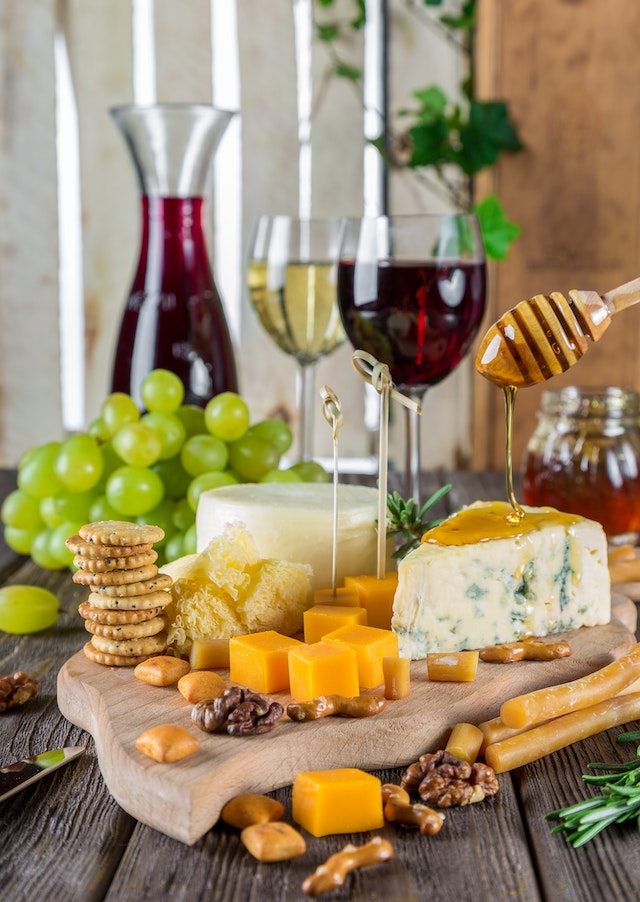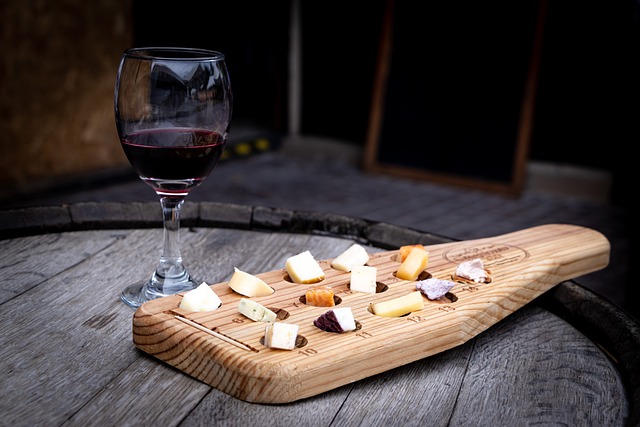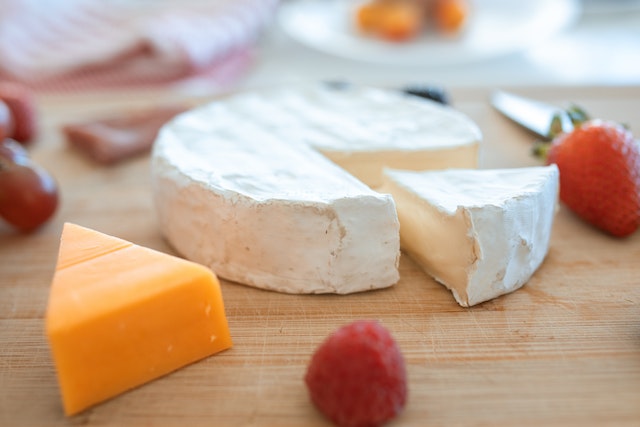
The art of pairing cheese with the right type of wine is a time-honored tradition in France, captivating taste buds and enchanting palates for centuries. Whether you are a seasoned connoisseur or a curious novice, allow us to guide you through the delightful journey of French cheese and wine pairing.
In France, the diversity of cheese is nothing short of astounding. From creamy Camembert to tangy Roquefort, the possibilities are as vast as the country’s varied landscapes. Similarly, France boasts an extensive selection of wines, each with distinct flavors that complement, enhance, or contrast with the unique characteristics of specific cheeses.
When embarking on a French cheese and wine pairing adventure, keep in mind the fundamental principles of balance and compatibility. The aim is to create a harmonious union of flavors, where neither the cheese nor the wine overpowers the other.
The Diversity of French Cheeses
France is renowned not only for its food but also for its rich cheese-making heritage, producing a staggering variety of cheeses that are celebrated around the world. Each region of France has its own distinct cheese traditions, resulting in an array of flavors, textures, and aromas that are nothing short of awe-inspiring.
Creamy Delights from Normandy
Camembert: This classic French cheese, hailing from Normandy, is known for its creamy texture and earthy undertones. The velvety richness of Camembert finds a perfect match with a crisp and fruity white wine, such as a delicately oaked Chardonnay or a lively Sauvignon Blanc. These wines help cut through the cheese’s creamy indulgence, enhancing its flavors in every delectable bite.
Bold and Blue from Auvergne
Roquefort: Made from the raw milk of ewes and aged in caves, Roquefort is the epitome of divine blue cheese. Its tangy, salty, and slightly spicy notes are best complemented by a sweet wine like Sauternes or a robust red like Syrah. The sweetness of these wines beautifully balances the sharpness of the Roquefort, resulting in an exquisite pairing that will leave you craving more.
Delicate and Aromatic from the Loire Valley
Sainte-Maure de Touraine: With its distinctive log shape and edible ash coating, Sainte-Maure de Touraine boasts a subtle flavor profile with hints of hazelnuts and fresh grass. To fully appreciate its delicate qualities, pair this goat cheese with a crisp and zesty white wine like a refreshing Sancerre or a lively Pouilly-Fumé. The wine’s citrusy notes harmonize exquisitely with the cheese’s delicate aroma, creating a remarkable tasting experience.

Nutty and Complex from the Alps
Comté: Hailing from the mountainous region of Franche-Comté, Comté is a versatile cheese with a delicate sweetness and nutty undertones. This aged cheese pairs wonderfully with a full-bodied red wine like a robust Bordeaux or a velvety Pinot Noir. The wine’s tannins and fruity flavors complement the nuttiness of Comté, resulting in a combination that will tantalize your taste buds.
French Wine Regions and Their Terroir
The enchanting symphony of flavors found in French wines is deeply rooted in the concept of terroir – a combination of factors including soil, climate, and winemaking techniques unique to each region. Let us embark on a journey through the picturesque landscapes of France, exploring its renowned wine regions and the distinctive characteristics that make them truly exceptional.
Bordeaux
Nestled along the banks of the Garonne River, Bordeaux is celebrated worldwide for its prestigious red wines. The region’s fertile gravelly soil, known as “terroir de Graves,” contributes to the production of full-bodied wines with flavors of blackcurrant, plum, and cedar. Its subregions, including Médoc and Saint-Émilion, offer a plethora of exquisite wines, ranging from the opulent and structured Cabernet Sauvignon to the velvety and complex Merlot.
Burgundy
Stretching across the picturesque hills of eastern France, Burgundy is revered for its elegant and nuanced wines. From the ethereal Pinot Noir to the luscious Chardonnay, each vineyard in Burgundy boasts its own distinct terroir. The region’s limestone-clay soil, along with a continental climate, imparts a unique minerality and freshness to the wines. Explore the legendary vineyards of Côte de Nuits and Côte de Beaune, where expressions of terroir are finely woven into every sip.
Champagne
No exploration of French wine regions would be complete without a journey through the rolling vineyards of Champagne. Distinguished as the birthplace of sparkling wine, Champagne’s unique terroir is characterized by cool climate, chalky soils, and a delicate balance of rainfall and sunlight. The region’s three main grape varieties – Chardonnay, Pinot Noir, and Pinot Meunier – are transformed into effervescent masterpieces through meticulous winemaking techniques, captivating with their finesse, complexity, and exquisite bubbles.
Rhone Valley
In the southeastern corner of France, the Rhone Valley boasts a diverse range of wines that tantalize the senses. Divided into two distinct zones, the northern and southern Rhone, each showcases its own terroir and grape varieties. Wines from the northern Rhone, such as Syrah and Viognier, captivate with their elegance and aromatic complexity. In the southern Rhone, the blend of Grenache, Syrah, and Mourvèdre create powerful and layered wines like Châteauneuf-du-Pape and Gigondas that exude warmth and richness.

Alsace
Nestled in the northeast corner of France, Alsace is renowned for its aromatic white wines. The region’s unique terroir is characterized by its cool climate, clay and limestone soils, and sheltering Vosges Mountains.
This allows for the production of vibrant wines that express their varietal character with finesse. From the floral and fruity Gewürztraminer to the zesty and refreshing Riesling, Alsace offers a mosaic of delights that pair exceptionally well with a variety of dishes.
Principles of Wine and Cheese Pairing
Pairing wine with cheese is an art form that requires careful consideration of flavors, textures, and aromas. To achieve the perfect harmony between wine and cheese, certain principles guide the process. Understanding these principles will elevate your tasting experience and create memorable combinations.
Balance of Intensity
To create a harmonious pairing, it is essential to consider the intensity of both the wine and the cheese. A general rule of thumb is to pair bold cheeses with equally robust wines and delicate cheeses with lighter wines. This balance ensures that neither the cheese nor the wine overwhelms the palate.
- Intense Cheeses: For strong and pungent cheeses like Roquefort or aged Gouda, opt for full-bodied wines such as Cabernet Sauvignon or Malbec. These wines possess enough structure to stand up to the powerful flavors of the cheese.

Delicate Cheeses: Fresh and mild cheeses like Mozzarella or Goat Cheese pair well with lighter wines such as Sauvignon Blanc or Pinot Grigio. These wines provide a refreshing acidity that complements the subtle flavors of the cheese.
Complementary and Contrasting Flavors
Pairing wine and cheese with flavors that interact in complementary or contrasting ways can create a memorable tasting experience.
- Complementary Pairings: Select wines and cheeses that share similar flavor profiles to enhance the overall tasting experience. For example, a buttery and creamy Brie pairs beautifully with a buttery Chardonnay, as both exhibit rich and indulgent characteristics.
- Contrasting Pairings: Alternatively, contrasting flavors can create a vibrant and dynamic pairing. Pairing a salty cheese like Feta with a sweet Riesling creates a delightful contrast where the saltiness is tempered by the wine’s sweetness.
Texture Interaction
Texture plays an important role in wine and cheese pairing, as it can enhance or diminish certain qualities of each.
- Soft Cheeses: Creamy and soft cheeses like Camembert or Mascarpone work well with wines that have a velvety texture, such as a smooth Pinot Noir or a round Chardonnay. The wine’s texture complements the richness of the cheese, creating a luscious and satisfying combination.
- Hard Cheeses: Hard cheeses like Parmesan or Pecorino Romano benefit from wines with robust tannins, like a bold Cabernet Sauvignon or a structured Syrah. The wine’s tannins cut through the cheese’s firmness, softening it and enhancing its flavors.
Pairing French cheese and wine is a delightful journey that requires a thoughtful balance of flavors, textures, and aromas. By considering the principles of intensity, complementary and contrasting flavors, and texture interaction, you can create harmonious pairings that inspire and delight the palate. So, raise a glass and savor the symphony of flavors that only a perfect cheese and wine pairing can deliver.
